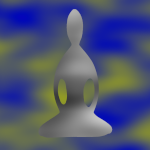Dear Friends,
Christina Feldman closes out her chapter on equanimity by looking at its aspect as “the fruition of kindness, compassion, joy, and understanding in an unshakeable liberation of the heart.” (page 127)
In this section, Christina digs into the process of perception, and how there can be tendencies in this process where we may lose equanimity. She says,
Our world of experience is fluid and ever changing. Each moment our sense doors interface with the world of sensory information, inwardly and outwardly. We are flooded by a cascade of sight, sounds, sensations, taste, smells, and thoughts. They all register in our consciousness and we perceive them. We name the bare sensory data through the medium of perception. … We have a name for what is perceived; the name comes to be a way of summing up the reality of what is perceived just as our own name becomes the standard-bearer of who we are or believe ourselves to be.
page 129
Perception is useful – it helps us navigate the world. Christina says that perception “travels the same neural pathways as memory … perception draws upon the past in order to organize the present.” (page 130) She gave a few examples, such as the smell of garlic bringing up a memory of falling in love at an Italian restaurant, and then how that memory brings an association with emotions, and garlic becomes wonderful.
However, when we don’t recognize this is a process of the mind, it’s easier for delusion to arise, leading us to assign a permanence to the ever-changing, to short-cut past the richness and deep knowing that is available in every moment.
As I was reflecting on this process of perception, I recalled something Jeanne brought in at the retreat on the weekend – the teachings of an Aleut elder, Larry Merculieff. He talked about a time, as a young child, he watched tens of thousands of seabirds flying around the cliffs. He watched birds flying in every direction, but no bird clipped the wing of another bird. He realized the birds were intensely alive and completely present – the birds didn’t zone out. Neither did the hunters he sat with, as they waited for sea lions. He said the hunters would be fully aware of the rhythm of the ocean and the wind, and by staying present to it all, they would be able to know a sea lion was coming before they would see it. (I was able to refresh my memory of Jeanne’s sharing when I found this referred to in “Native Perspectives on Sustainability: Larry Merculieff (Aleut)“)
That ability to be fully present and intensely alive in our own lives requires an understanding of the process of perception as a construction of the mind. Christina explains:
To learn to see something truly anew in this life is an integral part of awakening. Memories and associations arise, but we come to know them as memories and associations that can never tell the whole truth of the moment.
pages 130-131
…
Wisdom tells us that our capacity to deepen as a human being relies upon us being able to rest in not knowing. This is what enables us to learn, to be touched in new ways, and to be responsive rather than reactive.
Christina offers some phrases we can bring into our practice, to help us cultivate this mind of not-knowing:
May I rest in not knowing.
page 133
May I find ease in stillness.
May I be equally near all things.
May you approach these reflections with mindfulness and curiosity.
Warm wishes,
Andrea
